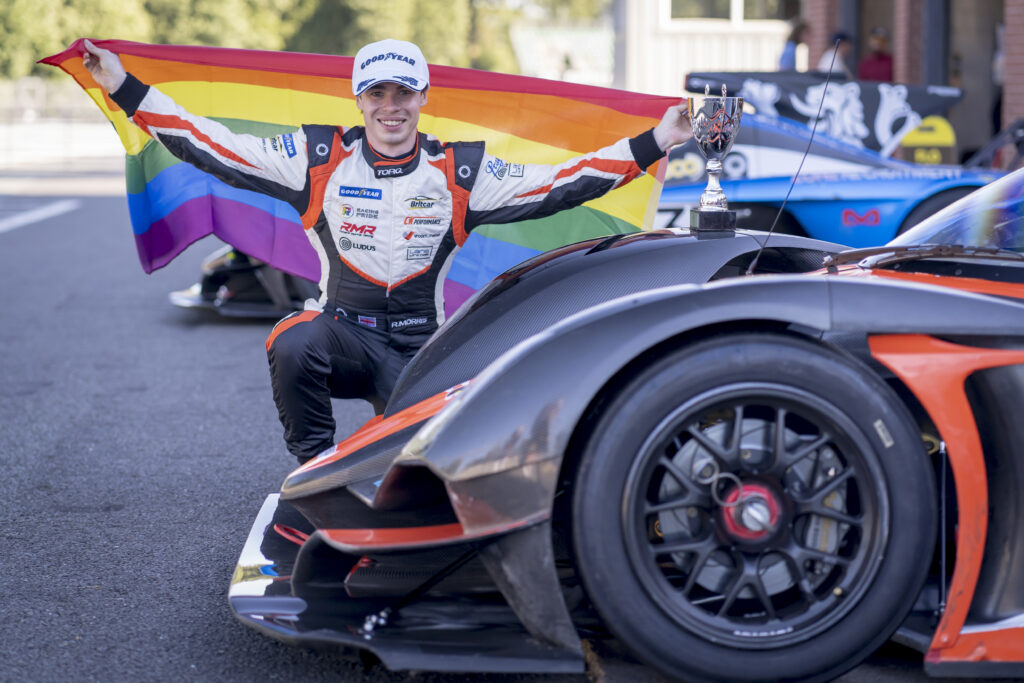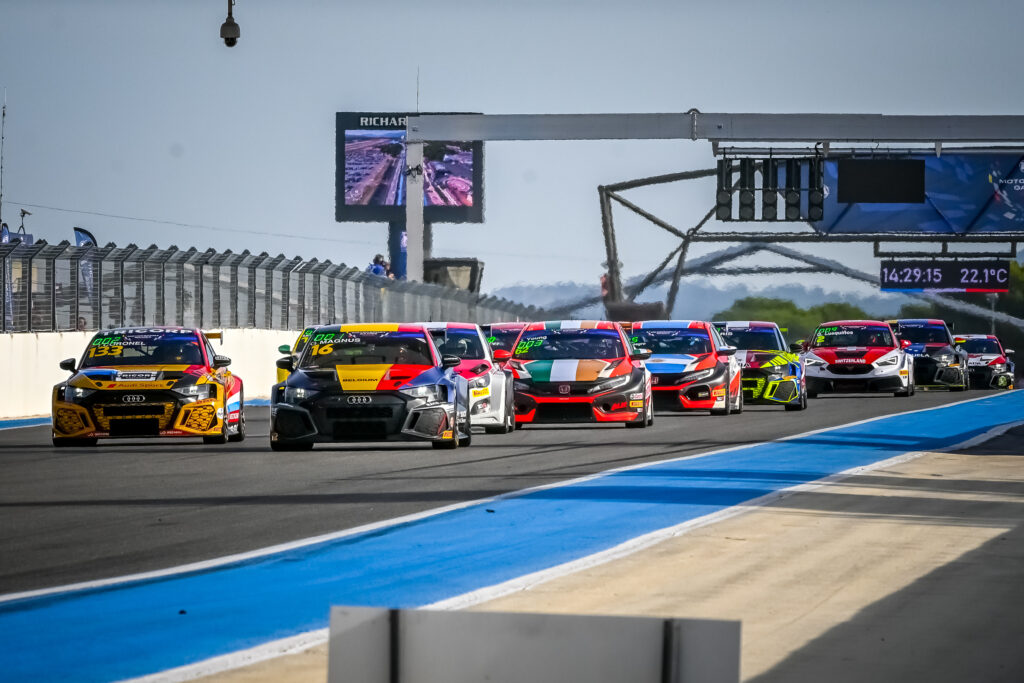In this Winner’s Spotlight series, we will be shining a light on past winners of The Race Media Awards, speaking to those who have achieved success with outstanding creativity across the motorsport industry.
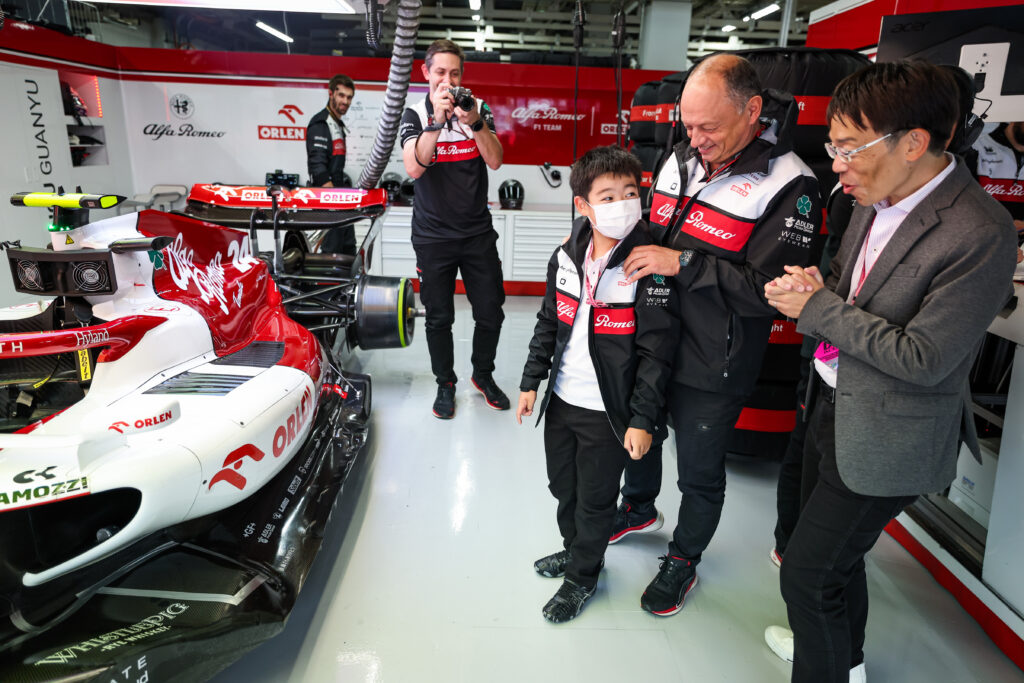
At the 2019 Japanese Grand Prix, the Alfa Romeo F1 Team were handed an envelope from a young fan who wanted to support out his favourite team. Unfortunately, he left no contact details, just a letter, a donation of his own pocket money and a single name, Goto.
Stefano Battiston (Head of Marketing and Communications) and William Ponissi (Senior Communications Manager) from Alfa Romeo F1 Team spoke to TRMA’s Oliver Card to share the heart-warming story of their award winning activation.
William Ponissi: Everybody who has been to a race in Japan and has followed Formula 1 knows just how fantastic the Japanese fans can be, and it’s one of the biggest welcomes we get. At the Suzuki Grand Prix in October 2019, as usual we were met by a huge crowd of fans, and as usual everybody was super nice. This young Japanese boy approached our then Team Principal Frederic Vasseur, and handed him an envelope just as he was leaving the track on Sunday. Fred put it straight in his bag as he was in a rush to catch a plane to Switzerland.
When he got back he finally opened this envelope to find a beautifully written letter from a nine year old child, explaining how much he loved the team, how much he loved the drivers, and that he was a Kimi Raikkonen fan. Most touchingly, he said he wanted to help the team and as such, had included some Japanese banknotes as his contribution to the budget. The equivalent was 20 euros, which for a nine year old is a significant amount and we were absolutely stumped. What he failed to mention was anything except his first name, Goto. We had absolutely no way to get back in touch with him, and that’s how the whole story of Finding Goto started. We wanted to get in touch with this little kid, to say thank you, and to show our gratitude to him and his family for writing this letter to us.
How did you even begin the process of actually finding him?
WP: We had nothing! We had a first name, and we knew he was in Suzuka and that was pretty much it. We decided to use the internet and social media in the best possible way; somebody out there in the world must know who Goto is. Without sharing any sensitive details, we reached out on social media, saying we’ve got this letter and we want to get in touch to see if anybody had any clue who he was so we could get in touch. We reached out to Japanese media, the story was in the local newspapers of Suzuka and featured in the biggest weekly F1 magazine in Japan. A few months later, we got an email from Goto’s dad who had been told by one of his colleagues, who was also an F1 fan, who had been reading through the magazines and said “hang on a minute, I know this child!” and so we managed to find our guy.
At what point did you realise you had such an incredible story?
WP: We are lucky that we have a lot of incredible fans. Anywhere we go in the world, we receive an incredible welcome. We can see what following the sport, the team and the drivers means to a lot of people out there. That in itself is a hugely gratifying experience for everybody involved. But to receive this letter from a young boy in Japan, who did not speak a very good level of English, to see such a gesture from a young child, the effort, the dedication, that devotion that Goto has shown in trying to reach out to us was by itself worthy of recognition.
Stefano Battiston: It’s the beauty of social media that shows that you can really reach out to these fans. At the end of the day it’s a beautiful story, but at the very start, there’s Goto, the F1 fan, who had the opportunity to hand Fred Vasseur this envelope, which initiated the whole story. And then everything else that came together makes the story a very special one.
There’s a lovely purity to it from a fan just wanting to help the team and wanting to be a part of this amazing world of Formula 1. What was the timescale from receiving the letter to actually getting Goto into the garage?
WP: The moment we got back to Europe in 2019, we started our Finding Goto campaign and after the season had ended we finally got our reply. Once we made contact in January 2020, we said we wanted to show our gratitude and do something special for Goto at next year’s Japanese Grand Prix.
What obviously we didn’t know was what was going to happen to the world just a few months later. Because of COVID 19, there was no Grand Prix in Japan in 2020 or 2021. But the relationship that we had established with Goto kept on and it was nice to see him develop as a young man throughout this phase and build a relationship with our team. When we finally went back to Japan in 2022 for the first post pandemic Japanese Grand Prix, we were able to finally fulfil our promise, and have Goto stay with us the whole weekend, meet the team and get involved, alongside a few other little surprises.
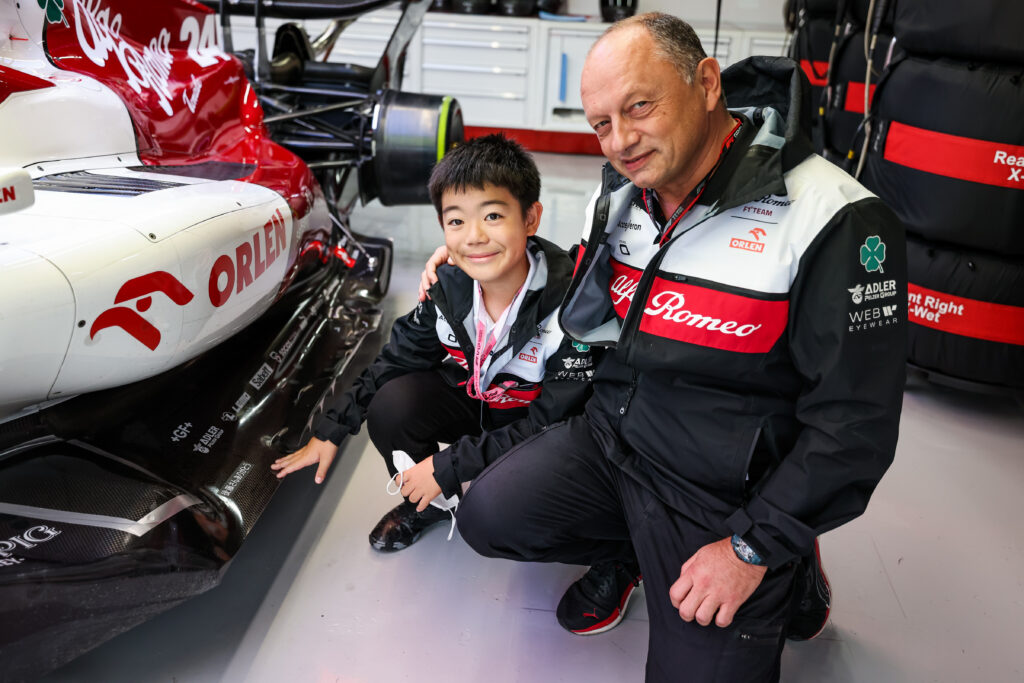
The reward of being there and being present in the paddock after all that time must have been such such a wonderful experience for him. How important is it for you to bring the fans into the narrative of Formula 1 through social media?
SB: The fans are what makes the sport special and why we’re actually here.
Recently in Melbourne, the drivers and I had the pleasure to go on to the main stage and talk to the fans. When you talk as communication specialists to fans, you expect nobody to show up because they’re there for the drivers and not for myself and Will. However, I was surprised that the 300-400 fans were there listening to our stories.
Wherever we go on this planet, we are very well received, we see all this passion and enthusiasm that they have for the sport.
WP: Formula 1 is sometimes not the most accessible, which is exactly why we bridge this divide. If you are a football fan, you support the club that plays in your town, you can go and see the games, you know, 20 or 30 times a year.
You are lucky if you have one Formula 1 race in your country, and that is if you are lucky enough to live in one of the few countries that hosts the race. So social media is an incredible way for teams to reach out to fans to create this connection to create this sense of belonging that you know, otherwise would not be possible.
That relationship between F1 and social media has evolved massively over the last decade; it is now such a huge presence in such a huge part of the sport. How does the Alfa Romeo F1 Team differentiate itself from other teams on the grid with your approach to social media?
SB: We have one big credo in our team which is “Get Closer”. We’ve been in F1 for 30 years, but we are still a small team based in Switzerland. Our founder Peter Sauber was known as a bit of a pioneer, so I always try to describe it like Asterix and Obelix fighting against the big teams. To survive in this sport, you have to show this kind of entrepreneurial, pioneer spirit. This is only possible if you have the passion and the dedication of all the people working here in Switzerland at the factory to make this dream happen.
This is what we want to share with our followers; we want to bring them as close as possible to the sport showing them behind the scenes what’s really happening, how we run such a team with smaller resources than other teams, but make up the deficit with the passion and dedication we have.
What do you feel is the most important type of content that you feel fans are looking for from social media? Are they wanting to get that behind the scenes? You’ll be wanting to get first access? What do they really after?
SB: Looking at our analytics, what we see and what we feel, is that our audience is really interested in the entire story. How does a team build up the garage? Who are the people in the back? These are the stories that we see people are interested in.
WP: It is shining a light on the men and women that make everything we do possible. Formula 1 is a massive team sport that happens not just at the track but back at base, as well. 90% of the success of our team happens at headquarters, and then 10% of what people see is what happens trackside. Our approach to social media is sharing the whole experience of the team, including the background of this operation with fans and those who follow us.
SB: And in terms of the drivers, the audience mostly sees them with the helmet on racing on the track. What fans are really into today is to see a bit the face behind the work visor, to see how they interact with the team and how human they are. You see it especially with how Valtteri Bottas and Zhou Guanyu interact with each other, you see it in the social projects we do together.
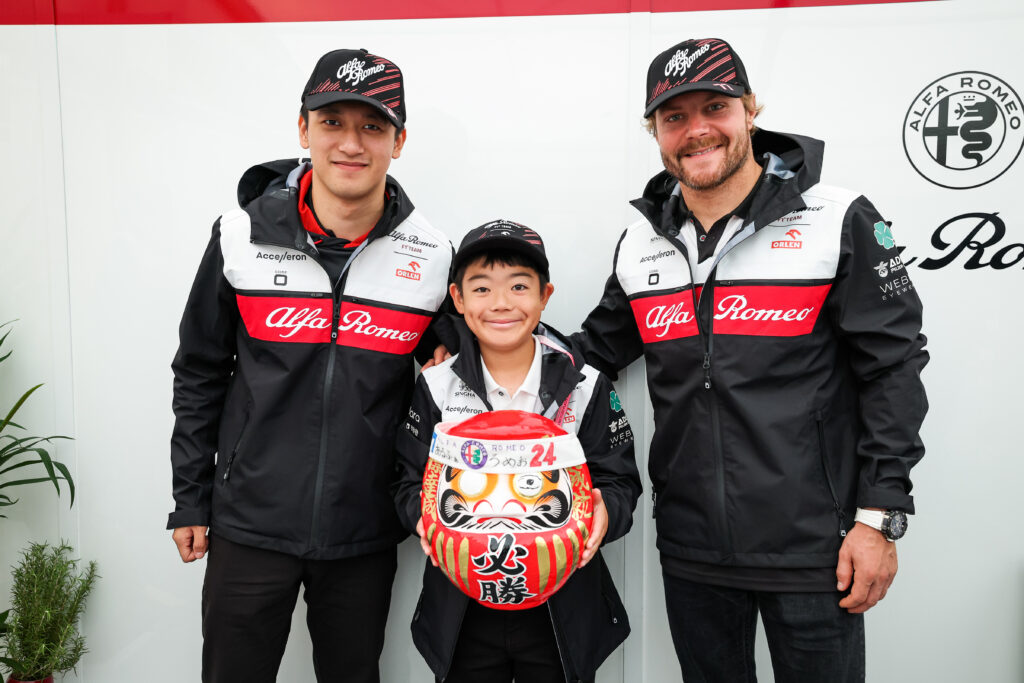
In Zhou Guanyu and Valtteri Bottas you’ve got a great couple of team ambassadors who have very different personalities, but have great strengths in different areas. What do you see as being the strengths of each one of these drivers when you’re communicating with your fan base?
SB: Valtteri is living his best life! He’s able to show his real personality, he is a great entrepreneur and a very creative human being, which really comes across on a daily basis through his social channels and fan interactions. It is great for us as a marketing and communication team because he gives us lots of input from his side on where we can improve our activations. Whenever we’re having a discussion with him it’s kind of a brainstorming session which is nice for us to work with.
Zhou himself is also very creative on the fashion side, and gives input to the whole merchandising collection. As a rookie he was a bit shyer last year on the social channels because he first wanted to prove his worth through his performance on track first. This year, you can see he’s working more on his personal brand and showing a bit more behind the scenes, showing the training and what he’s doing elsewhere. They are both really authentic, and very credible. They’re both great team players and very fun to work with.
WP: Nowadays, fans are extremely savvy and they can easily detect when something is not authentic, or when something has been staged. I don’t think you get that with our drivers. With our drivers, you get the real personalities. They’re fun, they come from very different experiences with very different personalities, but they work well together and I think people genuinely enjoy the interaction they have.
Is the role of social media creation for F1 teams dependent on being reactive or proactive, or a mixture both?
SB: From a pure marketing perspective, you try to plan ahead as much as you can. We always say that if 80% of what we do is planned, we can easily react to the 20% that is not planned. But at the end of the day, it’s a sport. You never know what can happen and sometimes you need to be ready to react to situations.
The more we can plan, the more space we have to do spontaneous activations and activities. So it’s hard to say if it’s 50:50, 60:40, or 80:20, I’d say as a general rule the more you plan ahead, the more space you have for creativity and spontaneity.
WP: Finding Goto is a perfect example that falls into the reactive side. One of the strengths we have with a team of our size is that we can take the time and put the effort into creating a relationship with our fans. It’s extremely important for us to have that engagement as a two-way conversation, because we don’t want to be just shouting from a rooftop about how great and fantastic we are.
The vast majority of people working on our side are F1 fans first and foremost, and we’ve all been on the other side of the fence! You never forget what it means to be a fan, what it means to follow a team or driver and what it means for those drivers to interact with you. It’s crucial, and it’s a big part of what we do.
What does winning The Race Media Award for Best Social Media Activation mean to you and the team?
SB: We are a sports team so winning is always something we appreciate! It was great to receive such an award from the industry, this gives back something for all the hard work we put into everything that we do. It was a very nice surprise, which we didn’t expect. The trophy has a special place in our comms office, so it is visible for everyone. Whenever we have tougher times, as we all have, we look at the award and say it’s worth going the extra mile to get this kind of recognition.
WP: It is also special because of what the activation was. We didn’t do this project because we thought it would look great on social media, we were genuinely touched and impressed by the letter that we received from Goto. We wanted to give back to a special fan and share his story. It was incredible that people enjoyed it, and if we contribute to restoring a little bit of faith in humanity, that’s a bonus! We’re very grateful for the recognition and it’s proof that people were moved by our story.

